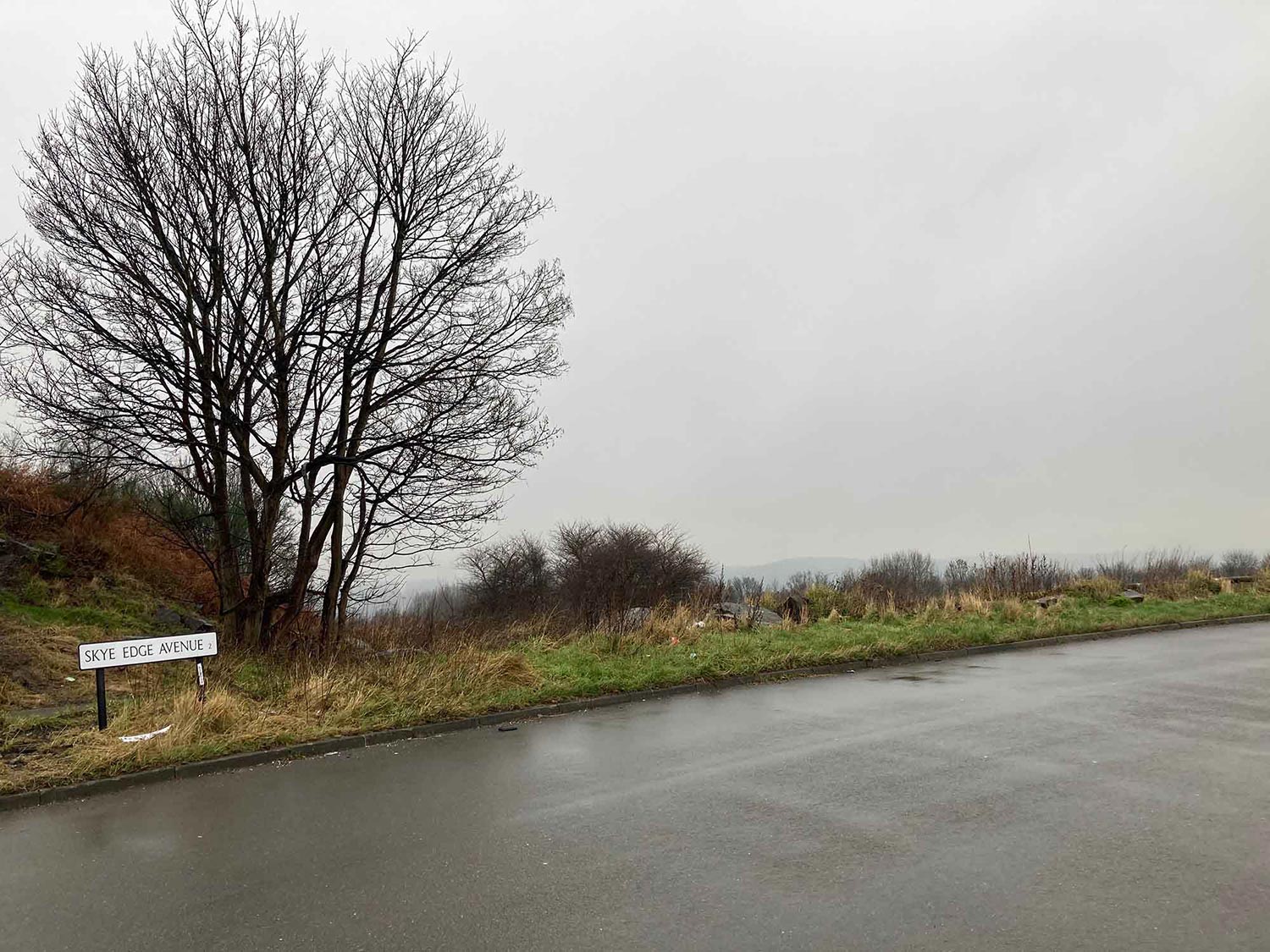
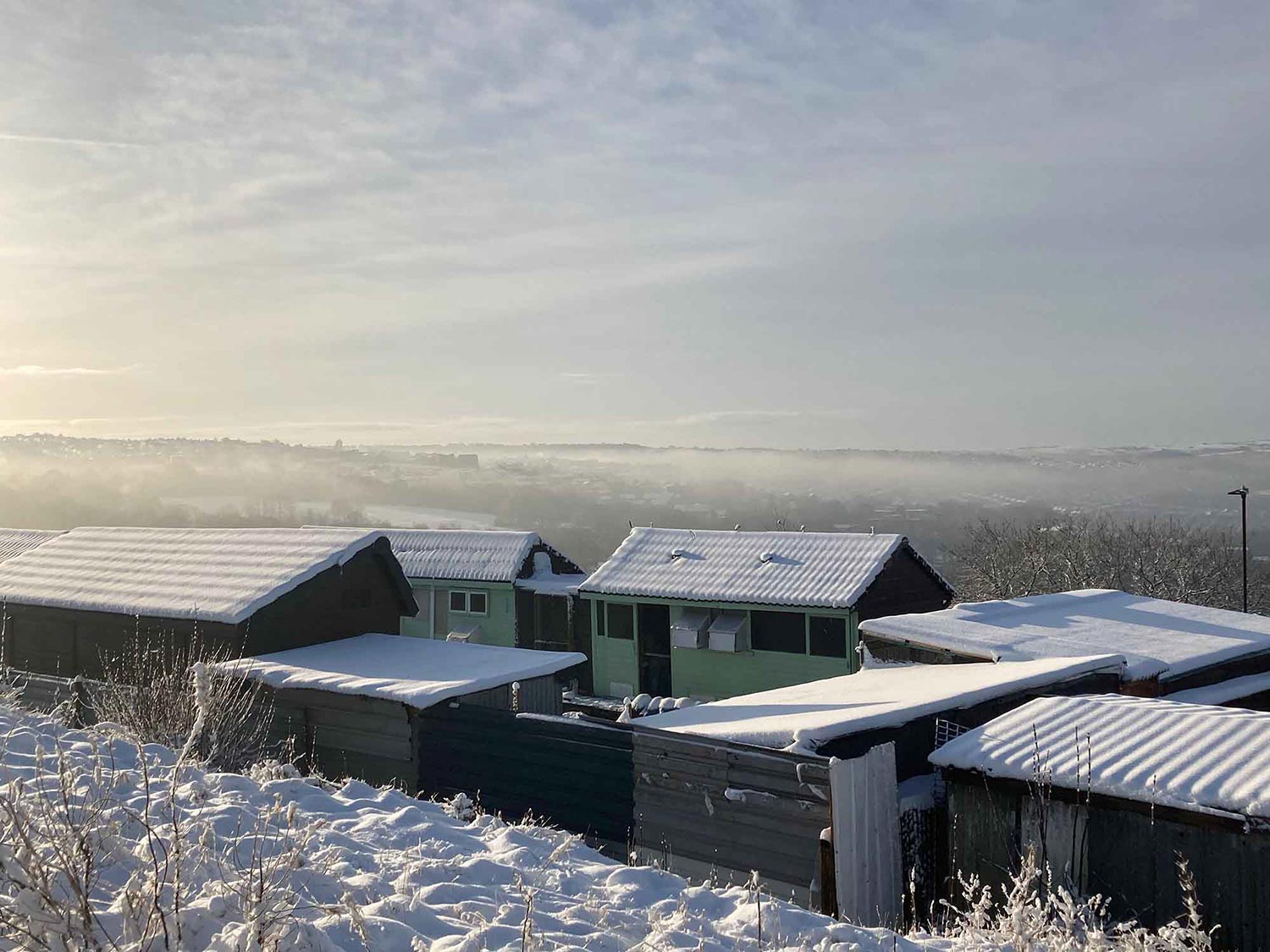
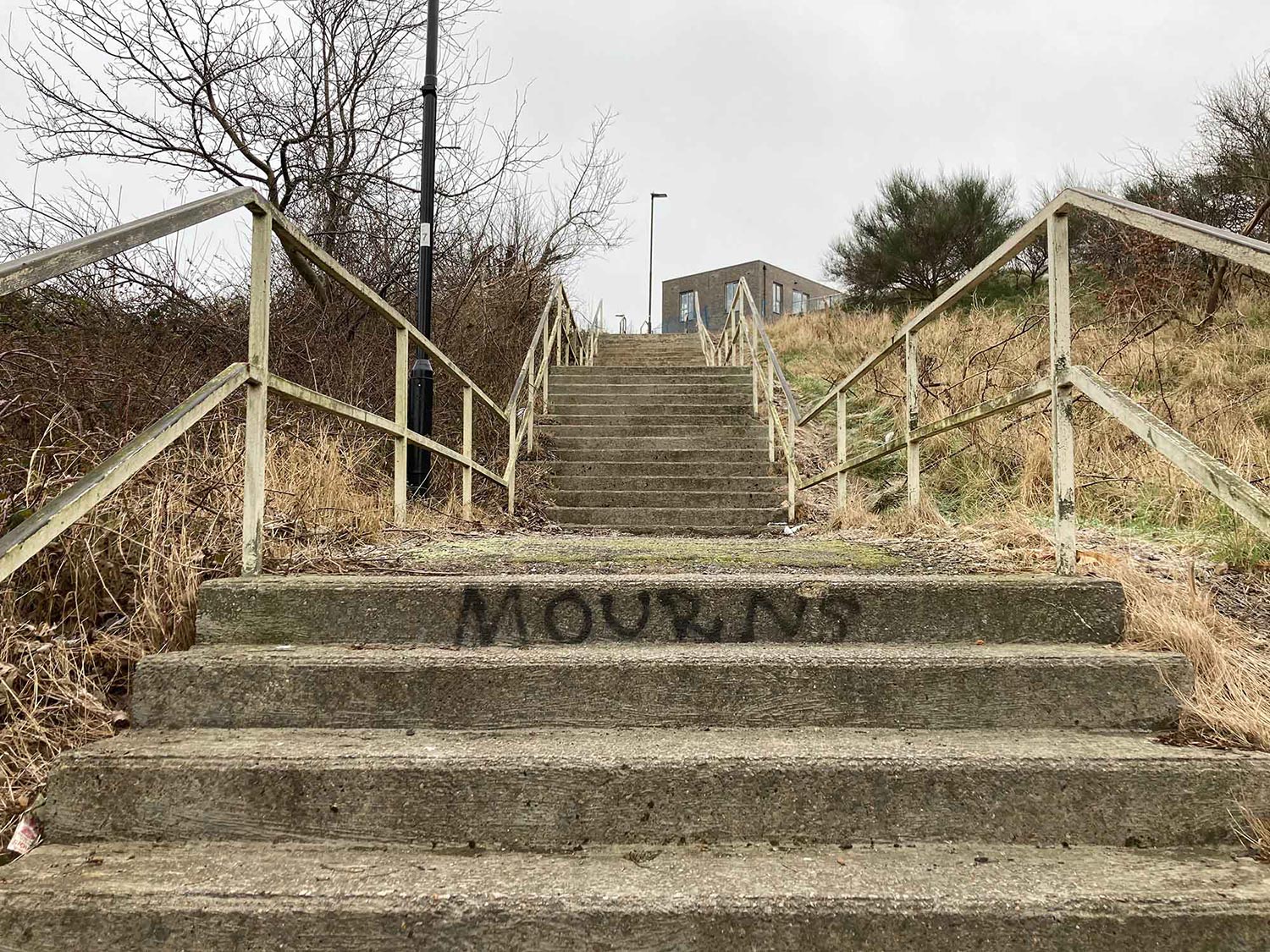
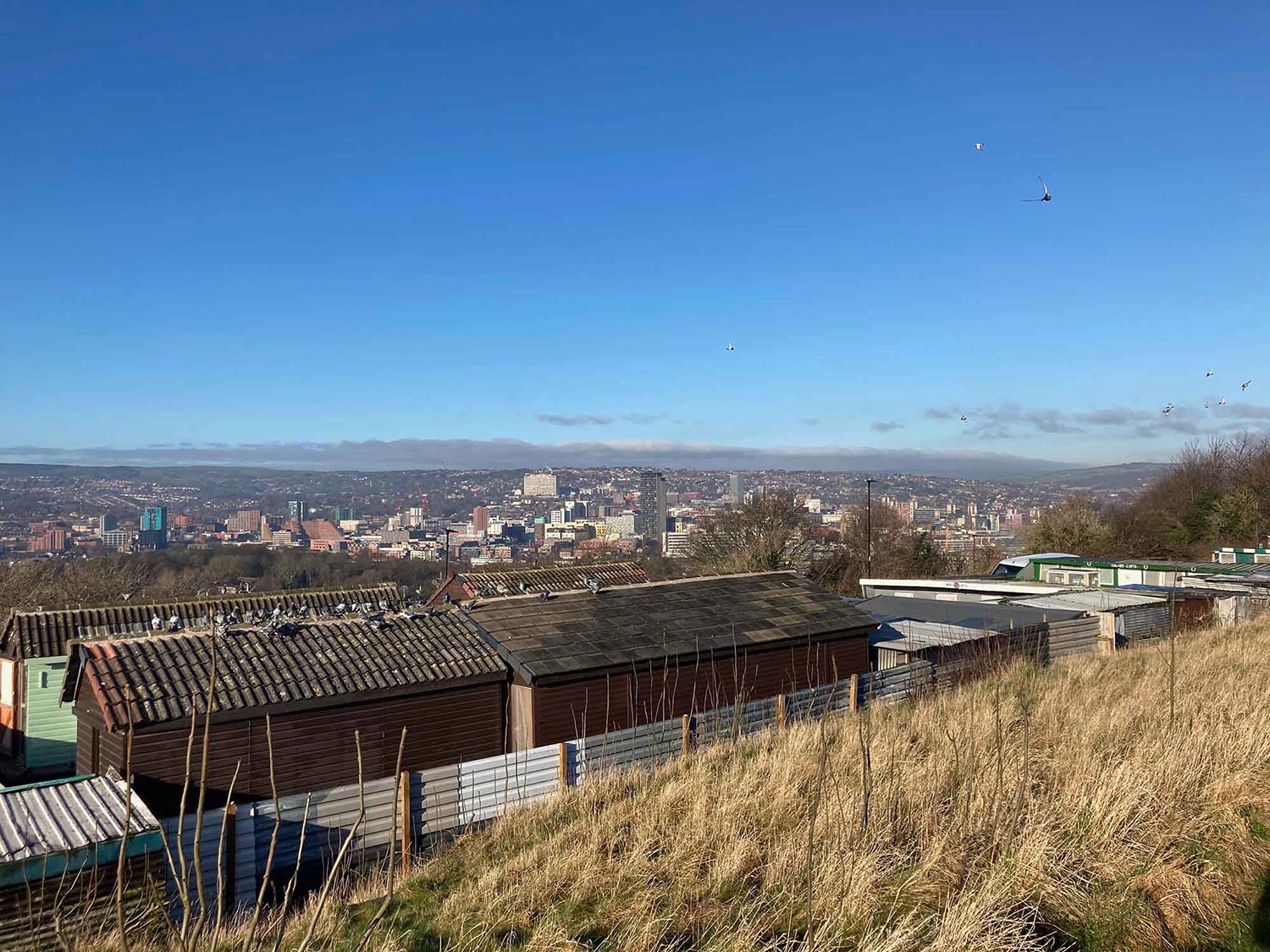

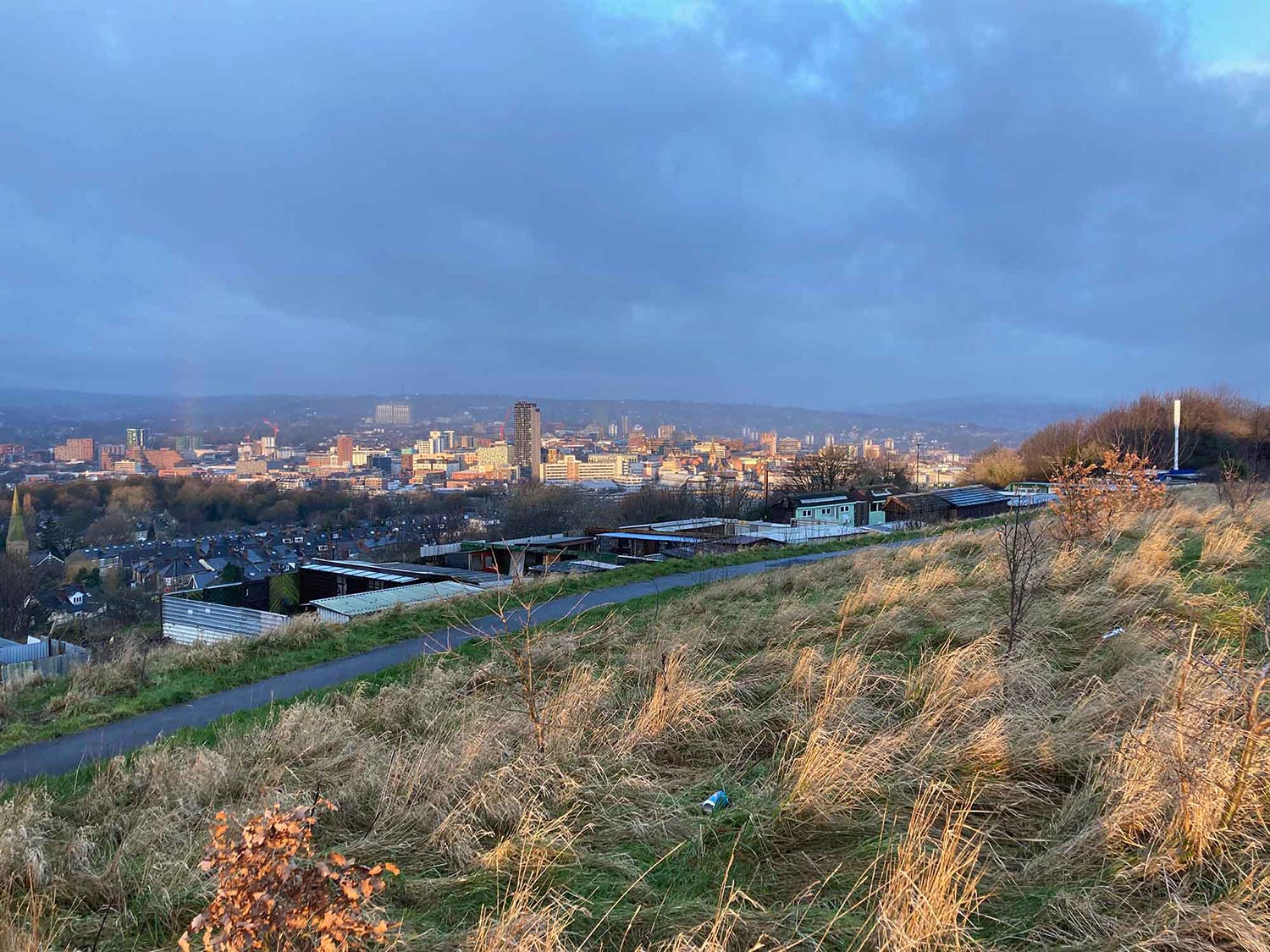
‘The starting point for orientation is the point from which the world unfolds: the “here” of the body and the “where” of its dwelling.’ Sara Ahmed, Queer Phenomenology: Orientations, Objects, Others, (2006).
‘Grey.
The dark of night lingers into the light of day and the air is heavy with mist. Cloud reaches land; timeless, calm, listless.
Drizzle. I walk along an upwardly inclining path…’
Skye Edge is written in response to a site with the same name; an area of disused land that lies at the top of a steep hill rising out Sheffield, UK. I first encountered the site unexpectedly after moving to a new home during the winter lockdown of 2021 and exploring the surrounding area on foot, and developed the text through a series of return walks to the site over a three-month period. The resulting fragmentary responses are interwoven with accounts of the domestic space within which I write, along with deviations into the spaces of memory and the imagination, and the words of other writers and Skye Edge residents.
My responses to the site are anchored around my encounters with a flock of homing pigeons that occupy a series of pigeon lofts built into the hillside. The cyclical, choreographic movements of the birds, along with the elevated vantage point afforded by the site and the building work at an adjacent housing development, are points around which I explore ideas of home, homing, orientation, construction, and loss, and our cohabitation with non-human life.
Skye Edge takes the form of a digital artist’s book; it makes use of images, layout, and a shift in registers between critical and poetic language to express a transition between exterior and interior spaces, both material and psychological. Drawing from my experience of making, and being confined to, a home during a time of collective and personal grief, the work acknowledges the influence of our emotional and physical situatedness upon our perceptions and interpretations of the environments we inhabit.
Charlotte A Morgan creates interdisciplinary work at the intersection of visual art, writing, and curating.
Her writing has featured in artist-led and independent publications including Ways of Working: A Mock Up (Wysing Arts Centre), Gnommero (Richard Taylor and Sarah Tripp), Breakthrough Fictioneers (Corridor 8) and Misery Connoisseur (Rowena Harris, Micheal Heilgemeir and Emma Hunt).
Charlotte is co-founder of COPY, an artist’s commissioning and publishing platform established in 2010 in collaboration with Joanna Jowett. COPY have produced publications, residencies, and public programmes with partners including Site Gallery, Sheffield; Yorkshire Sculpture Park, and The Tetley, Leeds. Her other collaborations include Co- (2013-16) with Dr Julia Udall, which explored collectivity and co-production within the architectures of working, living, and learning/dreaming.
Since 2013 her work has focused on curating, directing and producing exhibitions, events and performances in roles at Bloc Projects, Art Sheffield and The Hepworth Wakefield. Through this work, she has brought together national and international arts practitioners and scholars working across disciplines within projects engaged in intersecting architectural, social, and theoretical contexts.
Skye Edge was produced as part of the module Critical Spatial Practice: Site Writing as part of the MA Architectural History at The Bartlett School of Architecture, UCL in 2021.
Throughout my artistic education and practice, my work has engaged critically with the spatial and temporal conditions of the urban encounter and their fragmentary, non-linear nature. This has manifested through situated, itinerant practices; publishing projects; sculptural interventions exploring the display of words and artefacts; and writing in relation to the material and architectural landscape, both real and imaginary. Most recently my work has focused on the porosity of human and non-human bodies in relation to the lands and waters they inhabit.
The propositions of both critical spatial practice and site-writing, and the lineage of practices that inform them, resonate strongly within my research, practice, and arts programming. They have influenced the development of my sense of positionality and helped me to conceptualise the different areas of my practice within a central critical engagement with social/environmental context, subjectivity, and narrative. The work I produced in the Critical Spatial Practice: Site Writing module marked for me a nourishing development of practice and an exploration of this practice as/in relation to research.
Sara Ahmed, Queer Phenomenology: Orientations, Objects, Others (Durham, NC: Duke University Press, 2006).
Donna J. Haraway, Staying with the Trouble: Making Kin in the Chthulucene (Durham: Duke University Press, 2016).
Katrina Palmer, End Matter (London: Bookworks, 2015).
https://echoesandintersections.cargo.site/SKYE-EDGE
https://www.flipsnack.com/BEEAFBBBDC9/skye-edge-charlotte-morgan.html






































































